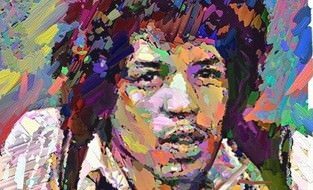

If you wish to have a completely white background, color the bottom most layer in with white. However, this background does have a color, meaning that it is not completely white. HINT: When you do not wish to have a transparent background, you leave “Deckkraft” (transparency) at 100%. On the left are the preset canvas settings, and on the right the settings for a neutral canvas (that I use). To draw with a neutral canvas (like I do), I do the following:ġ) Go to Ansicht (View) –> Leinwandeinstellungen (Canvas Settings)Ģ) This window (below) will appear. You can find it under “Bearbeiten” and then “Ebeneninhalt auswählen” (Strg+Alt+A)Īs you may notice when you open ArtRage, your canvas resembles real paper, and there seems to be an inexplicable lightsource that makes the bottom of your canvas darker, over even cast a shadow on the bottom-most layers. Most artists (at least the one’s I’ve seen on YouTube) like to apply all the base colors, and then use a selection tool that highlights the content on the layer. HINT #2: I know that I have an easy time coloring because I am used to how I do it. These edges can be easily covered with lineart, or you could also just apply less pressure onto your pen (decreasing the “Druck” automatically). HINT: When “Härte” and “Druck” are set at 100%, your brush will seem to be leaving pixelized edges around the color you apply. My Airbush settings (for, both, coloring and blending): The following example will show you how I skip base colors and immediately start shading with a darker color:

Even if the brush size will minimize (as you are applying less pressure) this is a fun tool to blend with. Something I like about the Airbrush is that it automatically blends when you apply less pressure onto your pen (meaning that its transparency lowers). I like to blend while I am coloring a certain object, meaning that I skip the base coloring-concept and jump to the blending instead. The way I blend is a little trickier than the way I color, because I believe that it takes practice and experience with your pen. A pressure sensitive pen can really help here, because you can automatically achieve coloring at would only be possible at 1% without a pressure sensitive pen. However, I usually stick around with the Airbrush set at 10% (A larger area will require a greater tool size though). And, again, the ideal brush size varies depending on the object you want to color. I use the Airbrush for, both, coloring and blending. HINT: Take advantage of your pressure sensitive pen! While I prefer to keep my lineart size more or less equal (I do vary it sometimes), I’ve seen pieces where the lineart changes in width, and it makes it often a lot more interesting to look at, and can add dynamic elements. It becomes really powerful at higher settings. I recommend you don’t set this tool over 20% though. However, if you can always enable ArtRage to smoothen lineart for you. “Glätten” (look at the image above) is the setting that does this for you. I used to do that when I first used ArtRage, but discovered that it is just so much easier to draw when this is disabled (and I tend to like lineart that is not perfect). From what I’ve seen in speedpaints, many people take advantage of the tool that smoothens their lineart. I don’t let the program straighten my lineart automatically.

My Tintengriffel settings (that I rarely ever change): Your tablet will not break when you apply lots of pressure. I usually keep the pressure on my pen soft.

When you use the 5% brush at different pressures with your tablet, you will end up with something like this: If you do not have a tablet, I recommend you keep your brush smaller than 3%. However, this brush size will only work efficiently if you have a tablet that is pressure sensitive. So I prefer to use the Tintengriffel with 5% of it’s size. I usually stick around with canvases that do not exceed 2000 pixels in height or length. Depending on your canvas size, the ideal size for this tool will vary. But a few days ago, I jumped back to the Tintengriffel, because the lineart turns out cleaner with this tool. I used to use the pencil (encircled red) instead of the “Tintengriffel” for lineart. The two brushes encircled with a black line are the brushes I use most frequently. I have the German version of ArtRage 4 (and will address the tools by their German name) A WIP of a drawing I’m working on looks like this:
#Where did the transform tool go artrage 5 full
(Continue to read to see the full tutorial) The following will just explain how I use it, since a lot of you seem to be interested. I’m not showing you the right way, because there is no right way.
#Where did the transform tool go artrage 5 how to
To start off with: there are various different ways of how to use ArtRage. Hello! Let me show you how I use ArtRage! :)


 0 kommentar(er)
0 kommentar(er)
